#wildlife education
Text
"fuck hunters" is an uneducated statement. hunters are bigger wildlife advocates than most people, and when you make generalized statements like "fuck hunters" you are clearly referring to either a) the hunters you knew who bragged about not following the laws or b) you're clutching your pearls over people who kill animals.
hunters are extremely important for our ecosystem! they keep wild populations in check, are one of the biggest funders for conservation efforts, and help promote sustainable land practices. not only is hunting beneficial for our land, it is also a tradition for many families for putting food on their tables and just for the sport and camaraderie. there will always be hunters who break the rules, but the people who follow them are the people who help sustain wildlife for everyone to enjoy.
reevaluate your beliefs if you are jumping to say "fuck hunters" when you read or hear about someone enjoying hunting. hunters are not heartless killers, most of us are people who care about animals and maintaining their natural habitats.
#ardenposting#environmentalism#hunting#conservation#wildlife management#wildlife#falconry#wildlife education
131 notes
·
View notes
Text
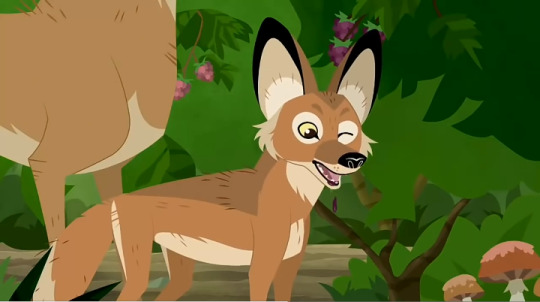
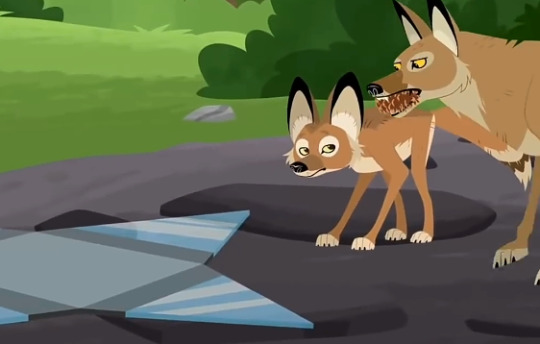


Adapto the Coyote
#coyote#canis latrans#martin kratt#chris kratt#kratt brothers#wild kratts#adapto the coyote#wildlife education#animated series
57 notes
·
View notes
Text
homunculus facts¡
try using the 5 finger method to remember the 5 most common kinds of homunculi in the north pacific region· the thumb for sloth <hitchhiking>' the index for greed <pointing at the things they want>' middle for wrath <obvious>' ring for lust <i shan,t say>' and pinkie for pride <same letter>•
envy and gluttony are obviously more common in the midwest•
strong smells waft from a crock left unattended in my corner of the lab• master is pickling garlic again•
in other news' i,m not as hungry recently as usual•
it,s because i,m eating rocks•
a grocery list blew under the door of warren,s place• that guy eats too much oatmeal•
#homunculus#homunculus facts#wizardposting#unreality#salmon#wildlife education#midwest#the seven deadly homunculi#pickling#theft#eating rocks#peasants eat gruel
38 notes
·
View notes
Text
Today's Bat: Fringe-Lipped Bat
Your best friend sets you up on a blind date. She says, "He's a real foodie, has great facial hair, and he makes his own cologne!" You're a little apprehensive when you're packed into a Jeep, and become even more so as you're taken out to the Peruvian Amazon. You find yourself alighted to a beautiful stream... the romance in the air crests... and you look up into the face of your date:

Environmental Impact: These guys are fairly omnivorous, though they're best known for eating frogs (more on this in the Power rating). They've got a wide range across northern South America, and are of no conservational concern. Their usefulness knows no bounds: they're a foundational food source for predators, they control pest species like katydids and mosquitos, they provide fertilizer in the form of guano, and they're choice research specimens thanks to their sociable natures and unique behaviors.
🦇🦇🦇🦇🦇/5
Beauty: Look at that mug. Those namesake lip protrusions are a real showstopper. Additionally, Fringe-Lipped Bats are famous perfumeries: they're well-studied for their "forearm crusts", which are orange patches along their wings where they cake a musk-and-fruit scented mixture of glandular secretions and saliva. These crusts are lady magnets (read: sexually selected traits). Researchers have reported locating roosts based on the group's collective odor. If human beings can appreciate the smells of whale vomit and beaver ass, I think we can make room in our hearts for Fringe-Lipped Bat crusts.
🦇🦇🦇🦇/5
Power: As promised, it's time to discuss this bat's superpower. The whiskers aren't just for show: they can sense the presence of poison. This, combined with their ability to differentiate between vocalizations, allows the bat to select only the most delicious frogs. They have the ability to eat nearly anything (including other bats!!), yet they continue to refine their palates. Respect.
🦇🦇🦇🦇🦇/5
Overall: The Fringe-Lipped Romeo is infinitely loveable. I'd highly recommend looking into Merlin Tuttle's research and photography of this species... and honestly, everything else Merlin Tuttle does. No further notes.
🦇🦇🦇🦇🦇/5
(Today's sources: Animal Diversity Web, Animalia, and the following resources borrowed from my local library:
Flores, Victoria, et al. “The Role of Male Forearm Crust Odour in Fringe-Lipped Bats (Trachops Cirrhosus).” Behaviour, vol. 156, no. 15, Dec. 2019, pp. 1435–58. EBSCOhost, https://doi.org/10.1163/1568539X-00003573.
Merlin D. Tuttle, Michael J. Ryan, Bat Predation and the Evolution of Frog Vocalizations in the Neotropics. Science 214, 677-678 (1981).DOI:10.1126/science.214.4521.677)
5 notes
·
View notes
Text
[ Edit: This new series will begin February 1st, 2024! ]
Heya everyone!
I need some help deciding which direction to take our Herptile of the Week segment in!
Option A.) Herptile of the Week becomes Herptile of the Day! This option would include one post per day regarding a particular herptile with each day being focused on a new herp! The post would entail similar content as to what has already posted in the past for the segment, including valuable details about the species and any interesting facts or studies regarding them that I come across during my research and much more! I would also like to include a little drawing of our chosen herp, done by me, with each post! :D
Option B.) Herptile of the Week would stay relatively the same as to how it already was, except posts will be less frequent, with one post every other day rather than everyday. We would still focus on one herp every week, with each post focusing on a different topic, but there would be less content overall. A drawing at the end of the week of the chosen herp will possibly also be included, but that would depend on timing and other stuffs :)
Option C.) Suggest a different solution! If you have any other ideas on how to format Herptile of the Week/Day(?) please feel free to send it to my ask box!
#Herptile of the Week#herpetology#herptiblr#herpetofauna#herptiles#reptiblr#reptiles#amphibians#amphiblr#animals#animal education#wildlife#wildlife education#wildlife science#educational#zoology#science
2 notes
·
View notes
Text
Wild Neighbors: Antlers, Feathers & Paws Unveiled
Discover the fascinating world of "Wild Neighbors: Antlers, Feathers & Paws Unveiled"! Immerse yourself in the wonders of wildlife in central New Hampshire. Join us on this extraordinary journey into the heart of nature's domain.
Welcome to The Earthy Alchemist’s first installment of “Wild Neighbors: Antlers, Feathers & Paws Unveiled,” where we embark on a captivating journey into the enchanting world of wildlife thriving right on our doorstep at Marleywood, nestled in central New Hampshire. No need for hiking boots or mosquito netting, and leave your pack behind – just grab a tasty beverage, sit back, and let’s set out…

View On WordPress
#Animal Behavior#animals#Earthy Alchemist#Marleywood#My New Hampshire Life#nature#Nature Enthusiast#New Hampshire#Outdoor Exploration#Wilderness Adventures#wildlife#Wildlife Awareness#Wildlife Conservation#Wildlife Conservation Efforts#Wildlife Discoveries#Wildlife Diversity#Wildlife Education#Wildlife Encounters#Wildlife Habitats#Wildlife Photography#Wildlife Sanctuary#Wildlife Stories#Wildlife Watching
2 notes
·
View notes
Text
Envision vibrant urban classrooms, alive with the natural rhythm of nature, allowing students to emerge as custodians of Michigan’s aquatic treasures. Picture the educational landscape transformed beyond traditional confines, dismantling barriers between the urban sprawl and the unconcealed wonders of the wild. In an extraordinary collaboration involving the Michigan Wildlife Council, Michigan Department of Natural Resources (DNR), and Real Times Media, a Detroit-based English Language Arts teacher is helping reshape the educational narrative. This groundbreaking initiative unfolds as a vibrant ecosystem, where students actively participate in raising salmon from eggs to release, presenting a hands-on approach that transcends textbooks and lectures.
Monica DeGarmo, an English Language Arts Teacher at the Academy of the Americas High School, is pioneering this unique wildlife education initiative. DeGarmo ‘s journey into wildlife education began unexpectedly during a field trip to the Belle Isle Water Festival in Fall 2022. The catalyst? A student-led impromptu search for crawdads during a canoeing adventure on Lake Okonoka. DeGarmo shares her experience, stating, ” For context, this is a student who was often unmotivated in class and out of nowhere, being in nature shined a whole new light on who he is as a person and the wealth of knowledge and skills that he had to share. He was in his element. I think one of the most exciting things about being a teacher is building relationships with your students and finding creative ways to make what we’re learning interesting and relevant to them.”
#Monica DeGarmo#detroit#urban youth#michigan#wilderness#esl#esl teacher#lake okonoka#wildlife education
0 notes
Video
youtube
Roaring Intrusion: Tiger Invades Pilibhit Home! Unbelievable Nighttime S...
#youtube#tigris snow#tiger eye#wildlife education#wildlife encounter#wildlife watching#wildlife exploration#wildlife ecology#pilibhit#tiger#tiger reserve#big cats#big cartel#animals#animals encounter#tigers#nature#forest#jungle
0 notes
Text
Prepare to be enchanted in just 60 seconds! 🐦 In this captivating YouTube Short, we dive into the mesmerizing world of hummingbirds. Discover fascinating facts about these tiny wonders of nature, from their astonishing flight abilities to their vibrant colors. Watch stunning visuals showcasing the unique features and behaviors of hummingbirds. Perfect for bird lovers and nature enthusiasts, this short video brings a burst of beauty and knowledge to your day! 🌸 Don't forget to like, subscribe, and share your favorite hummingbird fact in the comments. Stay tuned for more breathtaking nature shorts! #HummingbirdFacts, #BirdLovers, #WildlifeShorts, #NatureEducation, #BeautifulBirds, #AnimalKingdom, #NatureLovers, #EducationalShorts, #BirdWatching, #AmazingNature, #BirdFacts, #NatureTrivia, #TinyBirdsBigWorld, #Conservation, #NatureShort
#Hummingbirds#Bird Watching#Nature Shorts#Wildlife Education#Hummingbird Behavior#Beautiful Birds#Bird Facts#Animal Kingdom#Educational Nature Content#Bird Lovers#Amazing Bird Species#Nature Conservation#Wildlife Short Videos#Educational Shorts#Biodiversity#Nature's Marvels#Birdlife#Hummingbird Flight#Ornithology#Nature's Wonders
0 notes
Text
Here is a video of me feeding Grizzer, a captive born gray wolf at the International Wolf Center in Minnesota. He passed away at the old age of 17 in 2022.
0 notes
Text
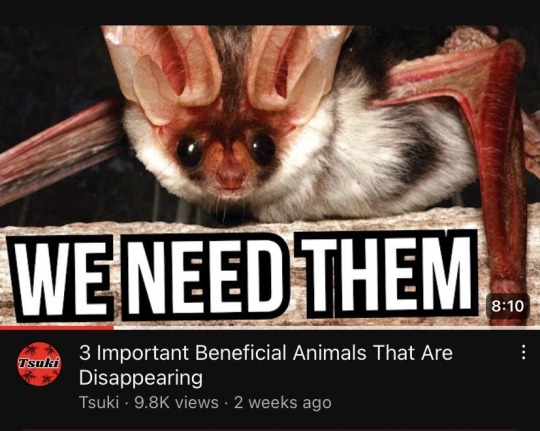
Here’s my personal recommendation of a YouTube video to check out:
youtube
#spreading awareness#youtube content#youtube recommendations#youtube video#youtube#youtube link#youtube links#video recommendation#video link#video links#tumblr recommendations#recommend#recommendation#wildlife education#wildlife educator#educational videos#conservation#animal conservation#urgent#animal lover#animal protection
0 notes
Text
* * * News Interruption * * *
#elk#animal kingdom#wild animals#wildlife#communication#pay attention#educate yourselves#educate yourself#knowledge is power#reeducate yourself#reeducate yourselves#think about it#think for yourselves#think for yourself#do your homework#ask yourself questions#question everything
5K notes
·
View notes
Text

🕊️🍉💚
In solidarity with the people of Palestine.
(A contribution for @freewatermelonartjam )
#I live in a country that has continuously turned down protest requests and discourages people from displaying any political symbols.#Any form of activism is tightly restricted or kept subtle#hence this “educational animal poster” was made.#This artwork may be subtle in speech but my stance and views are not. Genocide is genocide.#free palestine#palestine#free gaza#ceasfire now#art for palestine#gaza genocide#gaza#apartheid#palestine mountain gazelle#Gazella gazella#mountain gazelle#animal art#zoology#taxonomy#wildlife art
1K notes
·
View notes
Text
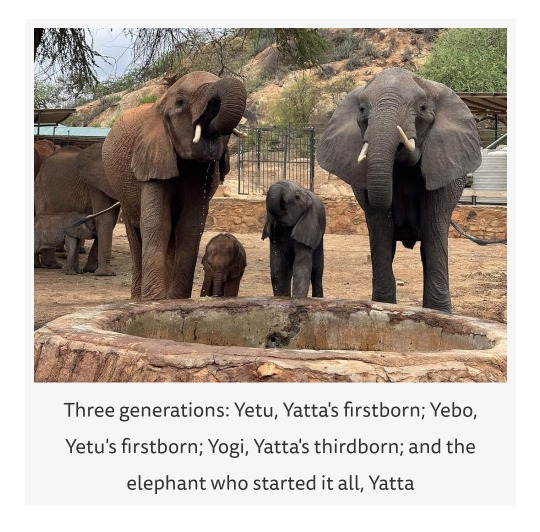
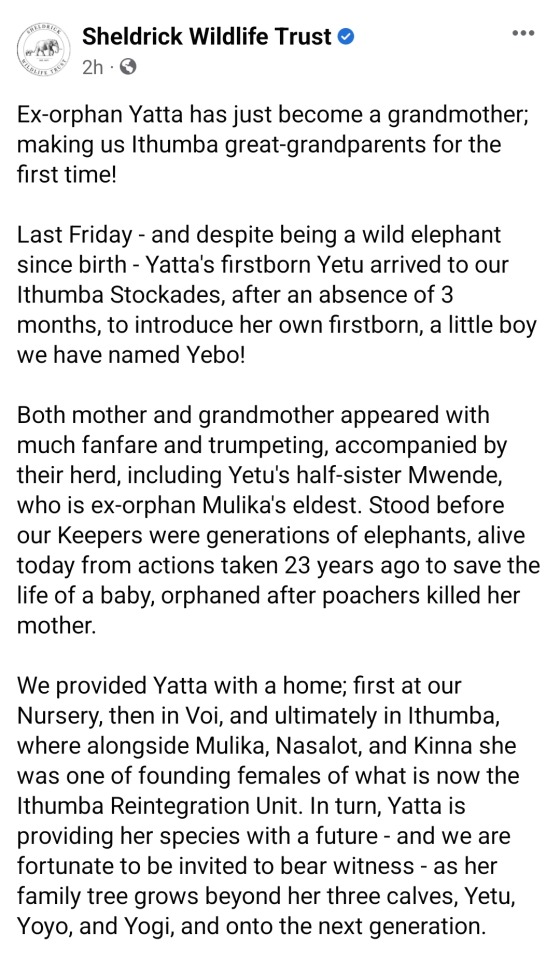
This is just SO cool and so cute!!! Sheldrick Wildlife Trust, a wildlife & conservation organization, is celebrating their first "great-grand-baby" elephant! One of their many programs is raising orphan wildlife, primarily elephants. Their program has been going for over 5 decades! They discovered the right formula to sustain milk-dependent baby elephants, and I believe rhinos as well.
This year they've reached 52 calves born to ex-orphans in the wild, which is absolutely amazing. But now they have their first one born to one of THOSE calves, making ex-orphan Yatta a grandmother!
Here's the longer blog post with the stories for this amazing elephant family. This bit at the end made me cry -

@hope-for-the-planet this seems like your kind of post!!
#wildlife#wildlife conservation#elephants#wildlife rescue#conservation#i love following this organization#they have so many cool programs#including education and community support#which are so so integral to conservation efforts#this is just so cool for them
3K notes
·
View notes
Text
Wild vs. Feral, Domesticated vs. Tame, Native vs. Invasive, and Why Words Matter
Originally posted on my website at https://rebeccalexa.com/wild-vs-feral/
Recently a post crossed my dash on Facebook featuring a small group of llamas in the forests of the Olympic Peninsula. The caption described them as “wild” llamas (Lama glama). That may seem pretty innocuous to the average person, but to a naturalist it’s a gross mischaracterization. For one thing, llamas are completely domestic animals, no more wild than a cow or dog; they are descended from the guanaco (Lama guanacoe), which is a truly wild camelid. So this means that the llamas on the peninsula are feral, not wild. But why does the distinction of wild vs. feral matter so much?
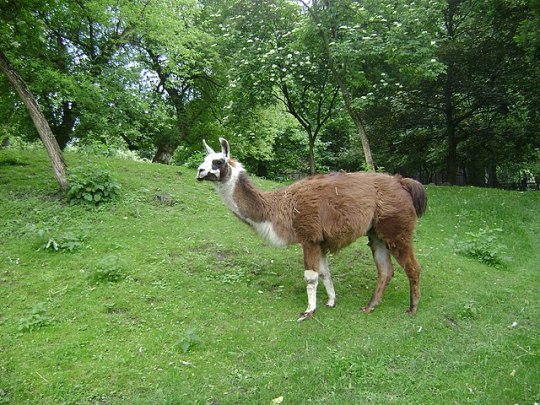
The terms we use to describe various species help us to understand their origin and, perhaps more importantly, their current ecological status. These concepts aren’t just relevant to scientists, however. Everyday people are constantly making decisions that can affect the ecosystems around them, and often these decisions are made without having a full understanding of their impact.
For example, look at how many people release unwanted pets into the wild, whether domesticated rabbits, goldfish, snakes, or other, more exotic animals. Some of these unfortunate animals end up dying pretty awful deaths due to starvation, exposure, or predation. But others manage to survive and reproduce, becoming the latest population of non-native–and potentially invasive–species in their ecosystem. This wouldn’t happen if more people understood the impact of non-native species, and how releasing captive animals puts native species at risk.
But it all starts with knowing that there’s a difference, and understanding the terms that explain why that difference exists. So let’s explore some vocabulary that can be used to describe species, whether animal, plant, or otherwise.
Let’s start with domestication, because there often seems to be confusion as to what makes a species domesticated. Domestication is a process that takes many years, often measured in centuries. Humans breed chosen animals for particular traits over a number of generations. As time passes, each subsequent generation becomes more different from the wild species it originated from, and eventually a new, fully domesticated species emerges from this process of artificial selection by humans.
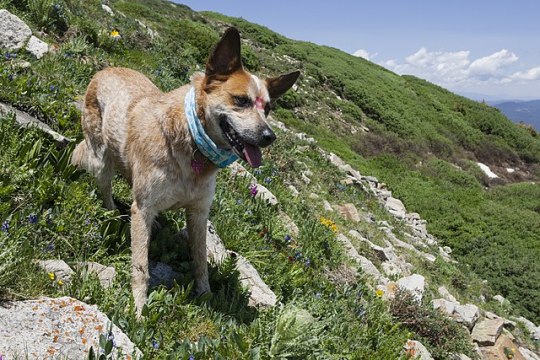
Dogs (Canis familiaris or Canis lupus familiaris) are the first animal humans domesticated in a process that started about 30,000 years ago. They evolved from the now-extinct Pleistocene wolf, a particular lineage of the gray wolf (Canis lupus), and it’s likely that the partnership began as some wolves showed less fear of humans while scavenging from our kills. By 14,000 years ago dogs were a distinct species (or subspecies) from wolves.
Dogs display very different characteristics from wolves. Their faces tend to be shorter with a more pronounced stop (the bump in the forehead where the muzzle meets the rest of the skull.) Floppy ears and curled tails are common, as are patchy-colored coats. Dogs tend to have weaker muscles than wolves of a similar size, shorter legs and smaller feet, smaller teeth, and a smaller size overall. This is a phenomenon known as neoteny, in which domesticated animals have a tendency to retain more juvenile physical traits of their parent wild species, and you can see it in domesticated animals across the board.
But it’s not just physical appearances that matter. Behaviorally dogs are generally more friendly toward humans; in fact, they’ve even developed some human-friendly body language that wolves don’t have, like “puppy dog eyes.” They can be easily trained and, unless poorly socialized, dogs generally enjoy the company of humans.
In many ways, physically and behaviorally, a dog is a wolf that never grew out of its puppy stage. While a young wolf pup may be able to live in someone’s house for a short time, as they grow older they become more destructive and less tolerant of human company. Your dog may love watching out the window during a car ride, but a wolf is going to be much more stressed out by the experience. Even wolf-dog hybrids have to be treated differently than your average domesticated dog because the wolf content has a significant effect on behavior.
This is just one example of how domestication isn’t just a matter of a few generations of selective breeding. You can also compare domesticated horses (Equus ferus caballus) with Przewalski’s horses (Equus ferus przewalskii or Equus przewalskii) or zebras (subgenus Hippotigris), domesticated cows (Bos taurus) with stories of fierce wild aurochs (Bos primigenius), and so forth. In every case the wild and domesticated counterparts are very different in both appearance and behavior.
Now, what about the term “tame”? Many wild animal species have been tamed over the years, either wild-caught individuals or those born in captivity. These tame animals may be more docile in comparison to their fully wild counterparts, but this generally takes a lot of handling and socialization from a young age. Moreover, tame animals retain a lot more wild behaviors than domesticated ones.

Take those supposed “domesticated” foxes that people want to have as pets. Most of the foxes available as pets have no relation to those in the famous Russian fox domestication experiment, but are from modern fur farm lines. And in fact the study foxes came from Russian fur farms, so the researchers were beginning with pre-tamed animals rather than truly wild ones. While some tame foxes may be more amenable to human handling than wild foxes, they are by no means domesticated. They are more prone to wild behaviors like urinating everywhere to mark territory, chewing on anything they can get their jaws on, nipping, and making a LOT of noise. Moreover, whereas dogs adapted to eating an omnivorous diet after millennia of eating alongside us, foxes need a more specialized diet than what you can get at a pet store.
Unfortunately there are unscrupulous people within the exotic pet trade who will advertise their tame (at best) stock as “domesticated.” This often leads consumers to thinking that they’re getting a much more tractable animal that will be as easy to care for as a cat or dog, and sets up everyone involved for disaster (except, of course, the seller with a fatter wallet.)
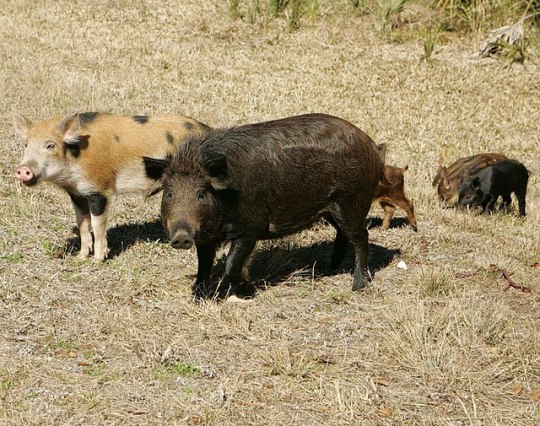
Next, let's compare wild vs. feral. A wild species is one that has never been domesticated, nor have its ancestors. Generally it will be a native species to its ecosystem, though non-native species can also be introduced to an ecosystem without ever having been domesticated. A feral animal, on the other hand, is a member of a domesticated species that has escaped or been released back into the wild and has survived to reproduce new generations that have never been handled by humans.
I’ve often heard people refer to the feral swine (Sus domesticus) that have ravaged ecosystems worldwide as “wild pigs”. They may behave in a wild manner, and they certainly look rougher and hairier than your average well-fed domesticated pig on a farm. It’s not uncommon for feral animals to regain some traits of their wild ancestors. However, that does not make them truly wild.
If you manage to wrest away a litter of newborn piglets from a feral sow and bottle-feed them, they are likely to be able to be socialized and kept in captivity, though they may still physically resemble feral pigs. They haven’t lost the deeply-ingrained genes that carry domesticated traits. However, if you try to raise a newborn Eurasian wild boar (Sus scrofa) or red river hog (Potamochoerus porcus), it will lack the domesticated traits of its farm cousins and show more wild traits as it ages, making it a rather unsuitable pet or farm animal. We also see this return to domestic traits in mustangs and other feral horses captured at a young age. While a mustang born in the wild may be tougher to work with at first than a foal born in captivity and handled from birth, the mustang will be much more calm and easier to train than, say, a zebra.
The problem with referring to feral animals as “wild” is that this suggests they are a natural part of the ecosystem they are in. Because a truly domesticated species (or subspecies) is not the same as the parent species, it has no place to which it is native as a wild animal.

A native species is one that has evolved in a given ecosystem for thousands or even millions of years. In the process it has developed numerous intricate interrelationships with many other species in that ecosystem, creating a careful system of checks and balances. A non-native species is any species that has been taken out of the ecosystem in which it evolved and placed in a different ecosystem where it is not normally found.
For example, here in North America the mourning dove (Zenaida macroura) is a wild native species. While it may resemble domesticated pigeons, it has never been domesticated even when kept in captivity. The Eurasian collared dove (Streptopelia decaocto), on the other hand, was introduced to the Americas after a few dozen individuals were released in the Bahamas in 1974. The feral pigeon (Columba livia domestica) is a domesticated species derived from the rock dove (Columba livia), which is native to Europe, west Asia, and northern Africa. Both the collared dove and pigeon are examples of non-native species. Most non-native species do not offer any benefits to the ecosystems they are introduced to because they do not have established relationships with native species. When they compete with native species for resources, they weaken the ecosystem overall.
Non-native species can be further categorized as naturalized or invasive, or even both. A naturalized species is a non-native one that has managed to establish reproducing populations, rather than going extinct without becoming established. Unfortunately, some people take this to mean that the species has become fully integrated into the new ecosystem. However, this is a process that again takes thousands to millions of years as other species adapt to the newcomer, which itself often also changes as it adapts to its new environment.
Ring-necked pheasants (Phasianus colchicus) are an example of a naturalized species in North America. Native to Asia and parts of Europe, they were introduced here as a game bird 250 years ago. While captive pheasants are regularly released into the wild to offer more hunting opportunities to humans, this species has likely been naturalized from its first introduction.
Again, “naturalized” doesn’t mean “natural”. Pheasants compete with native birds like northern bobwhite (Colinus virginianus) and prairie chickens (Tympanuchus spp.) Not only do they compete for food, nesting sites, and other resources, but they also spread diseases to native birds. Pheasants even engage in brood parasitism, laying their eggs in native birds’ nests and sometimes causing the native birds to abandon the nest and their own young entirely.
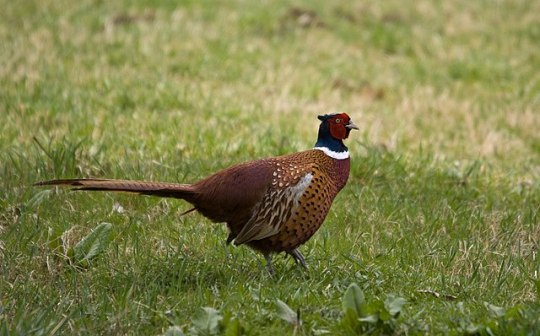
This means that the pheasants are also invasive as well as naturalized. Invasive species are non-natives that aggressively compete with, and sometimes displace or extirpate, native species. There are several hundred species that have become seriously invasive here, including both vertebrate and invertebrate animals, and numerous plants. But even the rest of the over 6000 non-native species that have become naturalized here still put pressure on native species, and have the potential to become invasive if their impact increases to a more damaging point.
Hopefully this gives you a clearer understanding of what these terms mean and why it’s important to know the difference. By knowing a little more about how your local ecosystem works and how different species may be contributing to or detracting from its overall health, you have more power to be able to make decisions that can preserve native species and help ecosystems be more resilient. Given that the removal of invasive species is one of the most important ways we can help ecosystems thrive in spite of climate change, it’s more important than ever that we increase nature literacy among the general populace. Consider this article just one small way to move that effort along.
Did you enjoy this post? Consider taking one of my online foraging and natural history classes or hiring me for a guided nature tour, checking out my other articles, or picking up a paperback or ebook I’ve written! You can even buy me a coffee here!
#wildlife#animals#nature#biology#science#scicomm#invasive species#wild animals#domesticated fox#feral hogs#long post#vocabulary#ecology#educational#biodiversity#conservation#environment#environmentalism#climate change#pigeons
2K notes
·
View notes
Text
˗ˏˋ Herptile of the Week! ˎˊ˗
────────────
What We Know So Far About the Reproduction Habits of the Dahl’s Toad-headed Turtle (Messoclemmys dahli)
────────────
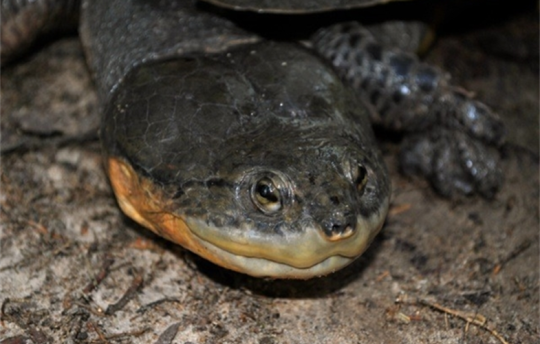
(Photo credit)
The Messoclemmys dahli is a severely understudied species. Very little is known about their daily habits and ways of life. The same can be said about the species’ exact way of reproduction and mating behaviors.
────────────

(Photo credit)
In 1966, researchers observed that the mating season for the Dahl’s Toad-headed Turtles occurred in June and July within captive specimen populations in Villavicencio, Colombia. Copulation itself was noted to take places specifically in shallow waters. It was suggested that the number of eggs per clutch was typically no higher than six, with the possibility of several clutches being laid per year, as indicated by the ovules in different degrees of development that were found in several female specimens at different points in the year. Based on this information, an educated guess was made regarding the nesting season of Messoclemmys dahli, supposedly being between September and October. From the seasons of April to May, hatchlings are suspected to emerge, having endured an incubation period of four months before being able to break free from their eggs.
────────────
Rueda-Almonacid et al. (2006) described a coloration change amongst adult specimens during the onset of their mating seasons. Males reportedly developed an orange coloring on their plastron, legs, and neck, becoming more red during the months of June and July. Only some females would turn a slight orange in hue, within the same regions as the males, but none would acquire the red tinting as the months changed.
────────────
Much is left to be uncovered about the Messoclemmys dahli, and hopefully with time we will begin to understand more about this unappreciated reptile! I hope you enjoyed reading and if you are interested in learning more about these mysterious turtles then I would suggest checking out my blog again tomorrow when we will discuss the conservation efforts in place regarding this species and what you can do to help spread awareness! Or if you prefer, you can help yourself to further reading on the Dahl’s Toad-headed Turtle by checking out my previous posts about them or the sources for this post that are linked to the turtles below! ↓
- 🐢
- 🐢
────────────
#Herptile of the Week#Dahl’s Toad-headed Turtle#Messoclemmys dahli#herpetology#herptiblr#herptiles#herpetofauna#reptiles#reptiblr#turtles#turtle#animals#endangered species#wildlife#wildlife conservation#wildlife biology#wildlife education#animal education#educational#zoology#biology#science#animal health
2 notes
·
View notes